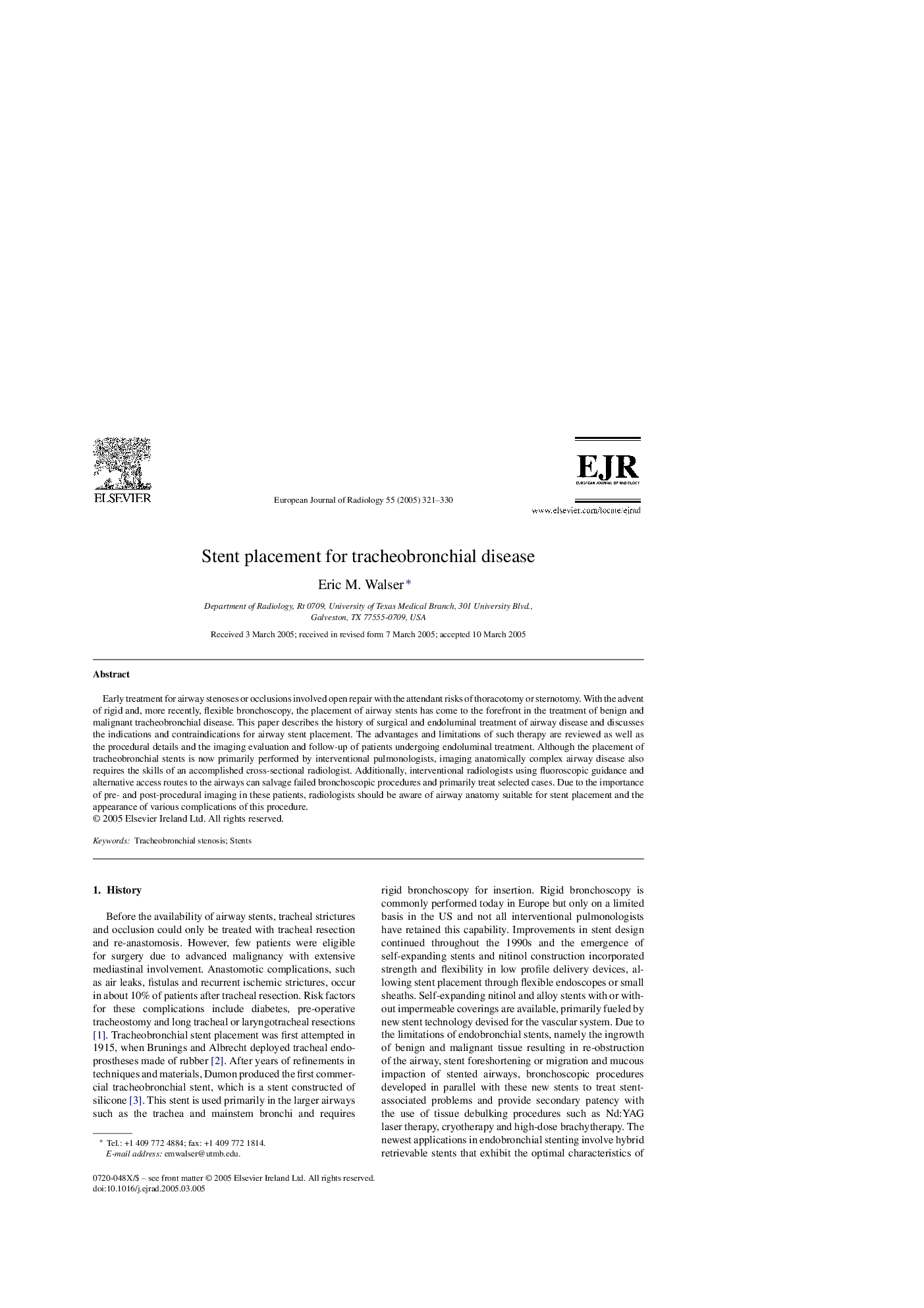| Article ID | Journal | Published Year | Pages | File Type |
|---|---|---|---|---|
| 10097424 | European Journal of Radiology | 2005 | 10 Pages |
Abstract
Early treatment for airway stenoses or occlusions involved open repair with the attendant risks of thoracotomy or sternotomy. With the advent of rigid and, more recently, flexible bronchoscopy, the placement of airway stents has come to the forefront in the treatment of benign and malignant tracheobronchial disease. This paper describes the history of surgical and endoluminal treatment of airway disease and discusses the indications and contraindications for airway stent placement. The advantages and limitations of such therapy are reviewed as well as the procedural details and the imaging evaluation and follow-up of patients undergoing endoluminal treatment. Although the placement of tracheobronchial stents is now primarily performed by interventional pulmonologists, imaging anatomically complex airway disease also requires the skills of an accomplished cross-sectional radiologist. Additionally, interventional radiologists using fluoroscopic guidance and alternative access routes to the airways can salvage failed bronchoscopic procedures and primarily treat selected cases. Due to the importance of pre- and post-procedural imaging in these patients, radiologists should be aware of airway anatomy suitable for stent placement and the appearance of various complications of this procedure.
Keywords
Related Topics
Health Sciences
Medicine and Dentistry
Radiology and Imaging
Authors
Eric M. Walser,
